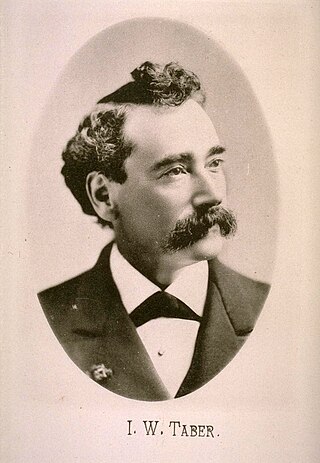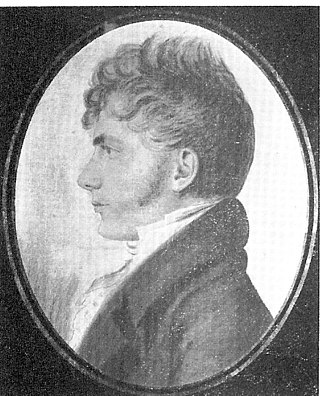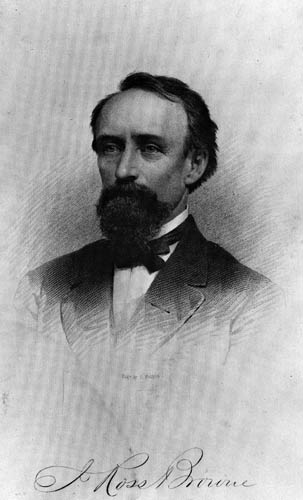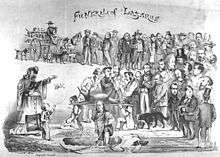
A rogues' gallery is a police collection of mug shots or other images of criminal suspects kept for identification purposes.

William Shew (1820–1903) was a prominent American photographer in the 19th century. He made a name for himself as a Daguerrotype portrait artist in the United States. He maintained a mobile studio in a wagon that he called his "Daguerrotype Saloon."

Frederick Marriott was an Anglo-American publisher and early promoter of aviation who created the Avitor Hermes Jr., the first unmanned aircraft to fly by its own power in the United States.

Joshua Abraham Norton was a resident of San Francisco, California, who in 1859 declared himself "Emperor of these United States" in a proclamation that he signed "Norton I., Emperor of the United States". Commonly known as Emperor Norton, he took the secondary title "Protector of Mexico" in 1866.
Joshua Abraham Norton, known as Norton I or Emperor Norton, was a celebrated citizen of San Francisco who in 1859 proclaimed himself "Emperor of the United States" and, later, "Protector of Mexico." Though he was generally considered insane, or at least highly eccentric, the citizens of San Francisco in the mid to late nineteenth century celebrated Norton's regal presence and his deeds.

Isaiah West Taber was an American daguerreotypist, ambrotypist, and photographer who took many pictures of noted Californians, which he donated to the California State Library "that the state may preserve the names and faces, and keep alive the memory of those who made it what it is." He was also a sketch artist and dentist. His studio also produced a series of stereoscopic views of west coast scenery.
George Henry Burgess was an English American painter, wood engraver and lithographer. In London, he received training in lithography. With two other brothers preceding them, in 1850 Burgess traveled to California in the company of his brother Charles. Once there, the Burgess brothers set up a jewelry and watch repair business in Sonora. Unsuccessful at mining, George spent time sketching the gold fields and mining activity. In 1856, he made the first of three trips to Hawaii, where he painted the royal family and made preparations for lithographic views of Honolulu. In San Francisco, his primary source of income was painting portraits, but he often revisited the Gold Rush theme. Burgess' most well-known work is the massive San Francisco in July, 1849, now located at the Oakland Museum of California.

Bummer and Lazarus were two stray dogs that roamed the streets of San Francisco, California, United States, in the early 1860s. Recognized for their unique bond and their prodigious rat-killing ability, they became a fixture of city newspapers, were exempted from local ordinances, and immortalized in cartoons.

Edward Anthony was an American photographer and one of the founders of E. & H. T. Anthony & Company which was the largest manufacturer and distributor of photographic supplies in the United States during the 19th century. Edward Anthony was a brother of Henry T. Anthony and had a very close business relationship with Mathew Brady.

James Dempsey Hutton was an artist, surveyor, cartographer and early photographer active in Montana, Wyoming, South Dakota and North Dakota in the years before the American Civil War. He served as an engineer in the Confederate States Army in that conflict, and died in exile in Mexico in 1868.

Peter Grain was a French-American artist who achieved success in the United States. Known for his panoramas, landscapes, portraits, dioramas, portrait miniatures, and theatrical designs, he was also an architect and the author of at least one stage play. His family was involved in theatrical design in New York, Philadelphia and other major American cities for at least two generations.
Charles D. Beckwith was an early frontier photographer who operated studios in California, Utah and Idaho during the late nineteenth century.
Arthur Nahl was a German-born artist, daguerreotyper, engraver, portraitist, and landscape painter. Nahl was a painter known for his American Old West paintings of California. He was considered one of California's finest engravers, and was ranked amongst the best gymnasts in California for his time.

John Ross Browne, often called J. Ross Browne, date of birth sometimes given as 1817, was an Irish-born American traveler, artist, writer and government agent. In the late 1970s, Ralston Purina opened a chain of seafood restaurants named after Browne, called J Ross Browne's Whaling Station.

Addie Lucia Ballou was an American suffragist, poet, artist, author, and lecturer.

Richard Maynard (1832–1907) was a Canadian photographer known mainly for his landscape views taken throughout British Columbia, along coastal Alaska and on the Pribiloff Islands of the Bering Sea.

Carlo Gentile (1835–1893), known professionally in his lifetime as Charles Gentile, was a 19th-century Italian-American photographer. After travelling the world, he settled in Victoria, British Columbia for a few years, photographing diverse subjects including the gold fields. In 1867, he moved to California, and lived a restless existence with frequent moves between California and Arizona. In 1871, he purchased a young boy named Wassaja, later named Carlos Montezuma, for 30 silver dollars. In the midst of their travels, they participated in a Wild West Show starring Buffalo Bill. Gentile continued the pursuit of his photographic career in Chicago, while publishing a series of newspapers along with maintaining a weekly magazine.

Martin Mason Hazeltine (1827–1903) was an American photographer. Hazeltine specialized in stereography, creating one of the largest collections of scenic landscape photography of the American West dating to the 1860s and 1870s.

Franklin George Abell Jr. was an American photographer active in the western United States in the late 19th- and early 20th-centuries.

Epifania de Guadalupe Vallejo de Frisbie was a Californio photographer. She is the earliest known photographer on the West Coast of the present-day United States.


















